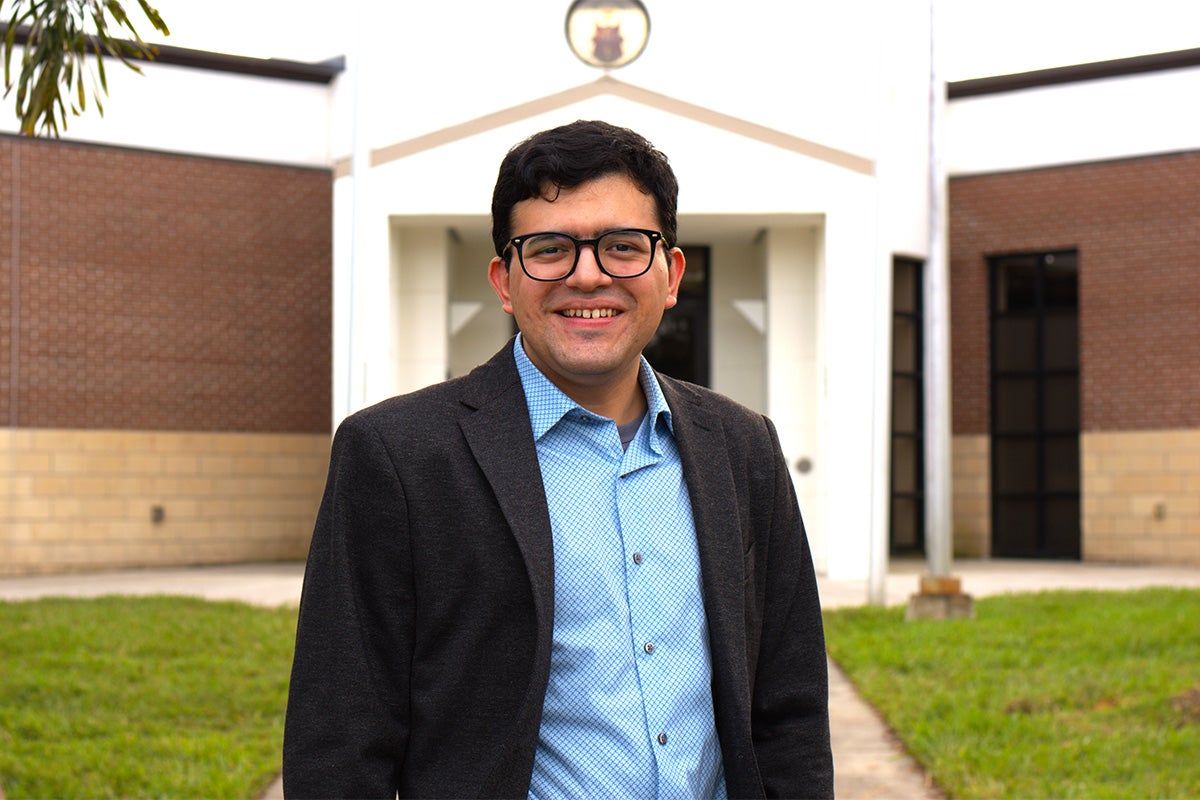UCF computer science student Esteban Segarra ’22MS has been selected for the 2023 Google-Computing Alliance of Hispanic Serving Institutions (CAHSI) Dissertation Award, worth $25,000. He was one of five students in the U.S. who received the award, which supports doctoral candidates during their final year of studies at a CAHSI school.
Originally from Monterrey, Mexico, Segarra earned his master’s degree in computer science from UCF in 2022. He considered several different universities for his graduate studies but decided that becoming a Knight was the best option for him.
“UCF’s distinguished reputation, especially in the field of computer vision when I enrolled, solidified my decision,” he says. “Following a comprehensive search during my graduate studies, I determined that UCF was the optimal choice.”
His research focuses on virtual reality and its related fields, augmented reality and mixed reality. Augmented reality features digital elements placed into the real world, like catching Pikachu at the Reflecting Pond when you play Pokemon GO or using your favorite Snapchat filter. Virtual reality is completely immersive — think Neo in The Matrix — while mixed reality allows users to interact with both the real world and a virtual environment.
Segarra has two major projects in the works, both inspired by his zeal for computer science and the desire to leverage video games for real-world solutions.
The first project, Infrastructure for Photorealistic Image and Environment Synthesis (I-SPIES) helps render synthetic images from terrestrial scanners, which use lasers to capture data from highly detailed 3D surfaces. Segarra has developed a rendering pipeline using a tool he developed called RecolorCloud, an application that corrects and modifies data from the scanners, to form a complete photo from the information captured.
“These synthetic images find applications in various areas, including machine learning and the preservation of historically significant culture buildings,” he says.
His second project, Capturing and Logging Ecological Virtual Experiences and Reality (CLEVER), is an open-source tool and dataset that facilitates capturing data from various virtual reality devices, regardless of the type of equipment or application.
“A common problem is that researchers have to adapt different data capture solutions for their experiments. The CLEVER toolkit can be added to an experiment and capture data in a replicable manner every time,” Segarra says. “The data can then be utilized for machine learning as well, determining personal identification qualities, or determining the learning rate of a participant running a training session in VR.”
Segarra says his overall vision as a researcher is to contribute to the advancement of VR technology and its various applications, including training, video games and real-world scenarios in industrial and commercial sectors.
His career plans include becoming a leader for innovative VR technologies by serving in academia. He is grateful to his two advisors, computer science faculty members Ryan McMahan and Annie Wu, whom he says have both been immensely supportive and instrumental in his development as a researcher and individual.
“Dr. McMahan has played a crucial role in my growth by identifying and assigning projects that align with my research interests and affording me a high level of autonomy in their design and completion. He also has been a great mentor leading me towards a path in academia or industry,” Segarra says. “On the other hand, Dr. Wu has instilled in me a strong sense of responsibility for conducting research, emphasizing the importance of thorough verification in scientific work. Additionally, she has significantly contributed to my interests in artificial intelligence, particularly in the realm of multi-agent systems.”
Segarra says he is grateful for the recognition from Google CAHSI and for the opportunity to share his research. He also says that CAHSI’s vison of increasing the Hispanic representation in computing and its mission to accelerate the progress of Hispanics is laudable.
He encourages students to work with passion toward their goals, and to pursue a graduate degree to help achieve CAHSI’s goal of having a 20% Hispanic population in computing by 2030.
“I know there are more hurdles to overcome but I know that I will persevere through them because I really enjoy what I do.”





